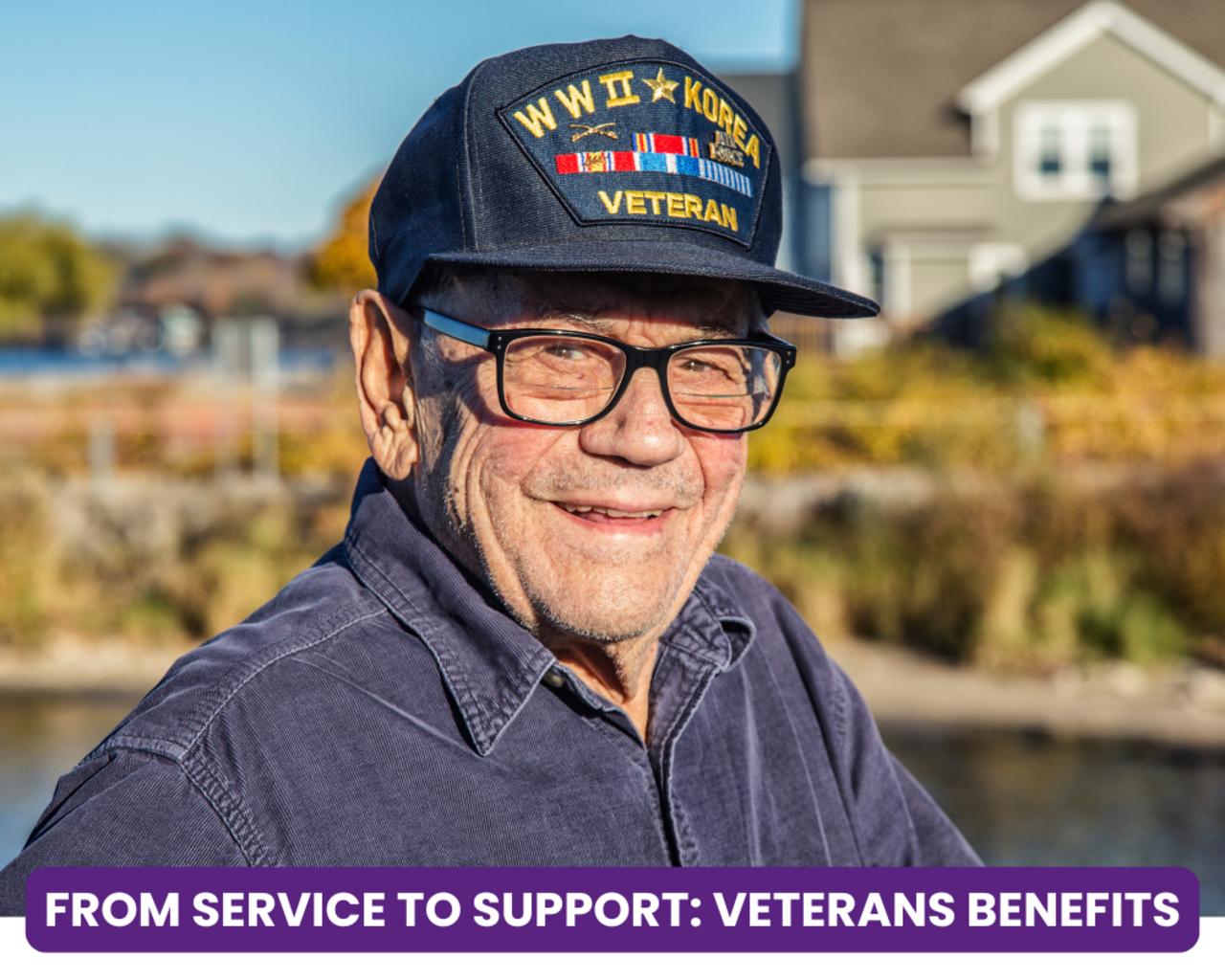Costs and Affordability•Assisted Living
From Service to Support: How Veterans Can Access Financial Assistance for Assisted Living
Costs and Affordability•Assisted Living
From Service to Support: How Veterans Can Access Financial Assistance for Assisted Living
As a veteran, you have dedicated your life to serving our great nation. Now, it's time to ensure you receive the assistance and support you deserve when it's needed the most. For many veterans, assisted living becomes a necessity as they age or face disabilities. Understanding the benefits available through the Department of Veterans Affairs (VA) is key to securing the care and support you need. In this guide, we will walk through the critical aspects of VA benefits for assisted living, including eligibility, application processes, and the impact of current policies.
What is Assisted Living, and How Can the VA Help?
Assisted living facilities support individuals who may need help with daily activities but do not require the intensive medical care found in nursing homes. For veterans, the VA offers several programs to help offset assisted living costs. Understanding these programs is essential for accessing the financial assistance you qualify for.
VA Pension with Aid and Attendance Benefit
- Service Requirements: You must have served at least 90 days of active duty, with at least one day during a recognized wartime period, and received a discharge other than dishonorable.
- Age or Disability: Applicants must be aged 65 or older or permanently disabled.
- **Financial Criteria: According to the VA, your income and net worth must meet limitations, which change annually. For instance, the net worth limit is set at $159,240 for 2025.
- Medical Necessity: You must require assistance with daily living activities such as bathing, dressing, or managing medications.
The Application Process for Aid and Attendance
Applying for the Aid and Attendance benefit can be a multi-step process, so it's crucial to prepare early:
- Gather Documentation: Collect your service records, medical evaluations, financial statements, and proof of assisted living expenses. In you need your military service records, you can submit an online request to get your DD214 or other military service records through the milConnect website here.
- Complete VA Form 21-2680: This form, "Examination for Housebound Status or Permanent Need for Regular Aid and Attendance," must be completed by a licensed physician.
- Submit the Application: You can submit your application online through the VA's website, by mail, or in person at a VA regional office.
- Await Decision: The VA will review your application and contact you with their decision. This process can take several months, so it's best to apply as soon as possible. Monitor your application status during the process here.
Additional VA Programs Supporting Assisted Living
In addition to the Aid and Attendance benefit, the VA offers other programs that can help with long-term care:
- Veterans Directed Care: This program provides funds to hire personal care assistants, including family members, giving you more control over your care.
- Community Residential Care: This program offers assistance in approved residential settings for veterans who cannot live independently and do not require hospital or nursing home care.
- Medical Foster Homes: This alternative provides long-term care in a non-institutional setting, where a trained caregiver offers 24/7 support in a private home.
Impact of Current Administration Policies on Veteran Benefits
Recent administrative policies have introduced changes that may affect veteran benefits, including those related to assisted living:
- Budgetary Adjustments: The fiscal year 2025 budget for the VA includes mandatory funding of $235.3 billion, reflecting a 21.6% increase from the previous year. This budget aims to support veterans' benefits, including those related to long-term care. department.va.gov
- Improved Access: In addition to increased funding and expanded eligibility, the VA has also implemented new initiatives to improve veterans' access to care. These include telehealth services, which allow veterans in remote or rural areas to receive virtual medical care from their homes. This has greatly improved veterans' access to healthcare services who may have difficulty traveling long distances for appointments.
- Lower Wait Times: The VA has also worked towards streamlining its processes and reducing wait times for appointments and services. This includes implementing electronic health records and online appointment scheduling systems, making it easier for veterans to manage their healthcare needs.
Resources for Further Assistance
Veterans seeking more information or assistance with benefits related to assisted living can use the following resources:
- VA Health Care: This service provides comprehensive information on health benefits, including long-term care options.
- Veterans Benefits Administration: This manages various benefits programs, including pensions and disability compensation.
- Veteran Service Organizations: These organizations offer guidance and assistance in navigating VA benefits and applications.
Conclusion
As a veteran, accessing assistance for assisted living is your right, thanks to your dedicated service. By understanding the eligibility criteria, application processes, and current policies, you can maximize your benefits. Use the resources provided by the VA. All veterans deserve to live with dignity and comfort in the golden years.
Important Websites for Veteran-Assisted Living Resources :
- Department of Veterans Affairs (VA) - The VA's website is a crucial source of information for all things related to benefits and support for veterans. They have a section dedicated to long-term care, including assisted living facilities. https://www.va.gov/health-care/about-va-health-benefits/long-term-care/**
- National Association of State Veterans Homes (NASVH) - This organization represents state-run veterans homes nationwide and provides information on their locations, services offered, and eligibility criteria. https://nasvh.org https://nasvh.org
- US Department of Health and Human Services Eldercare Locator - This resource helps veterans find local assistance with housing options. https://www.ebenefits.va.gov/ebenefits/homepage
- VA Aid and Attendance Benefit - This benefit can help offset the cost of long-term care for eligible veterans and their spouses. It can be used towards assisted living expenses, among other types of care. https://www.va.gov/pension/aid-attendance-houseboundhttps://www.va.gov/pension/aid-attendance-housebound
- American Legion - A veteran service organization that advocates for veterans' rights and provides resources for education, employment, and benefits. They also offer a support line for veterans seeking assistance. https://www.legion.org
- PurpleDoorFinders.com—This website helps veterans and their families find assisted living options. It provides a directory of facilities with specific filters for military benefits.
- State-specific programs - Some states offer additional financial assistance or tax breaks for veterans or their families seeking long-term care services.
*While Purple Door Finders researched these resources as of March 2025, please select the links to verify and see any updated changes.
FAQ
How to get veterans benefits for assisted living?
VA forms are available online, or you can apply in person at your local VA regional office at no charge to the Veteran. If possible, take your DD214 with you. If you don't have it, the VA will help you but keep in mind that it will slow down the application process. There are outside companies that offer to assist with the application process. Keep in mind that those services will most likely charge a fee. https://www.va.gov/pension/aid-attendance-housebound/
Will medicaid pay for assisted living?
Medicaid is a federal and state financial assistance program. People with limited income or resources may qualify for financial assistance through Medicaid. Unfortunately, not all assisted living communities accept payments from Medicaid or participate in the Medicaid waiver program. Participation varies from state to state so, check with your state health or welfare departments, your long-term care ombudsman, or the Area Office on Aging.
What is included in assisted living costs?
Assisted living costs typically include the rental rate, meals, social engagements, activities, transportation, care, and staff support. Many times it's found to be less expensive than staying in your home with in-home care providers. However, by the time you add up all the expenses of staying at home, it can cost more than assisted living.



